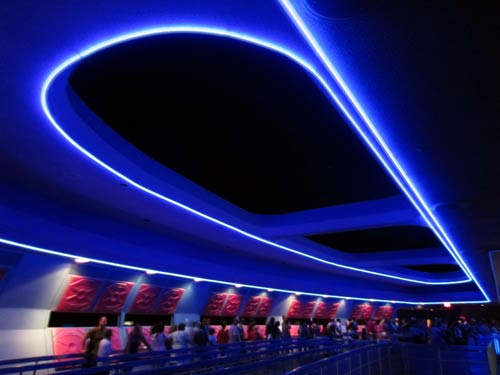We all wait in lines – in all kinds of places. Whether it is at the bank, the grocery store, or the drive through, lines are a part of our life. And most people don’t like waiting in lines.
That is why companies spend a lot of time and money studying lines and minimizing our wait times. The Kroger grocery store chain recently installed infrared cameras near the check outs in 95% of their stores. These cameras track body heat and are tied into a computer system that tracks when customers shop. They use this information to adjust staffing at the registers. The results were impressive: wait times dropped from 4 minutes before the system to just 26 seconds now.
Disney Attacks Wait Times
Disney is throwing plenty of science, technology, and money at the issue of waiting in line too. They are working on the holy grail of theme park issues: eliminating waiting in lines. They are doing this through the implementation of the NextGen initiative which allows people to schedule ride times in advance. When they show up, they don’t have to wait. The cost? A cool $1 billion, although some people say it may be as much as $3 billion for the overall effort. And so far the feedback from people who have actually tested the system is very positive, although Disney has also endured some negative buzz on the internet about NextGen.

But even NextGen is not targeting the complete elimination of waiting in line – at least not now. While scheduling with FastPass+ under the new NextGen system will eliminate some waits, Disney is implementing other changes to reduce time spent waiting – or make the time spent waiting less boring and annoying.
The Psychology Of Waiting
Interestingly scientists have found that it isn’t just the number of minutes spent waiting that creates displeasure. People get grumpy about waiting when they don’t have information on how long the wait will be, when the movement in the line stalls, or when people cut in line.
In the same way, people can actually get pleasure out of waiting (seriously) when the line moves faster than expected or when they get closer to completing the wait.
Disney Attacks Waits With Psychology
Disney has done plenty of things, both in the past and recently as part of the overall NextGen efforts, to deal with the psychology aspects of waiting.
Scientists have long known that “in process” waits, or waits where you have something to do, are less annoying. That is why for many years Disney has added plenty of interesting things to look at while you wait. Many rides and shows have a “Secene 0” (Disney speak for a or pre-show before “Scene 1” when the attraction begins) to keep you occupied before you get to the real show or attraction. That’s a good use of an “in process” wait.
In recent years Disney took this up a notch. They installed an interactive graveyard at the Haunted Mansion, and there are now 87 game stops in the long line leading up to the Space Mountain load area.
For many years Disney has posted estimated wait times near the entrances to attractions. And in doing so they have worked to both stop a dissatisfier and add a satisfier.
From a dissatisfaction standpoint, the wait time information gives the guest information about the expected wait time. This mean they have more information, and are likely less dissatisfied about being in the dark about what to expect.
From a satisfier standpoint, many insiders know that Disney often slightly inflates the posted wait time on the sign outside the ride. The sign actually mentions a longer time than the actual wait time. So when you get up to the ride, you think to yourself, “Wow, the wait time sign said I would need to wait 30 minutes. I only had to wait 25 minutes. Great!” Imagine if the wait time sign said 20 minutes and you had to wait 25 minutes. They you would think to yourself, “Ugh. The wait time sign said 20 minutes but I had to wait longer than that: 25 minutes.” The actual wait time was the same either way – 25 minutes. But the information that Disney presents helps shape your perception of that time.
Command Center
A report in the New York Times talks about the Disney Operational Command Center, an underground bunker that monitors traffic and wait times through the parks with video cameras and digital maps. When they see congestion or lines that are too long, they can quickly notify ride operations to increase capacity or they can dispatch entertainment to keep people occupied while they wait. Again, “in process” waits are better than idle-time waits.
Waiting Costs Big Bucks
Managing wait times is a big issue for Disney. People who wait aren’t spending money on food and merchandise. And if they wait too much, the go back home and complain about it to their family and friends – and Disney then potentially loses business. That is why the company takes the management of wait times very seriously. So seriously that they are willing to spend billions of dollars tackling the issue.
Do you like how Disney manages wait times?

